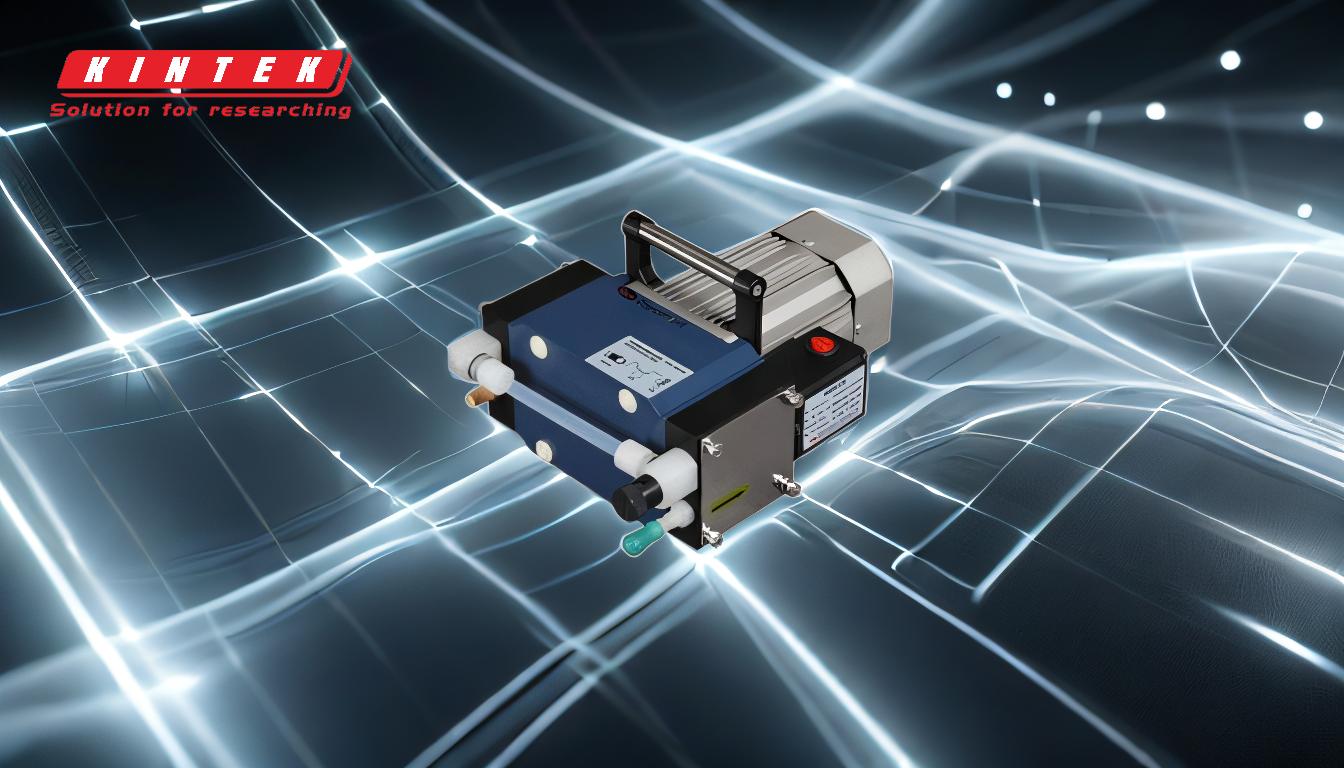Vacuum pumps can get quite hot during operation, depending on their type, design, and the specific application they are used for. The heat generated is primarily due to the mechanical friction of moving parts, compression of gases, and the energy required to maintain the vacuum. Different types of vacuum pumps, such as rotary vane, diaphragm, and roots pumps, have varying operating temperatures due to their unique mechanisms and materials. For example, rotary vane pumps, which are widely used, can reach temperatures of up to 90°C (194°F) or higher during continuous operation. Proper cooling, maintenance, and monitoring are essential to ensure the pump operates efficiently and safely without overheating.
Key Points Explained:

-
Factors Influencing Heat Generation in Vacuum Pumps:
- Mechanical Friction: Moving parts, such as vanes, pistons, or diaphragms, generate heat due to friction.
- Gas Compression: Compressing gases to create a vacuum requires energy, which is often dissipated as heat.
- High Pressure Ratio: Vacuum pumps operate with a high pressure ratio, which increases the workload and heat generation.
- Continuous Operation: Pumps used for prolonged periods, such as in industrial or laboratory settings, are more prone to heating up.
-
Temperature Ranges by Pump Type:
- Rotary Vane Vacuum Pumps: These are the most common and cost-effective pumps. They can reach temperatures of 80–90°C (176–194°F) during continuous operation. Some models may even exceed this range if not properly cooled.
- Diaphragm Vacuum Pumps: These pumps typically operate at lower temperatures compared to rotary vane pumps, often staying below 60°C (140°F). However, the temperature can rise if the pump is used for extended periods or in demanding applications.
- Roots Pumps: These pumps are used in fine vacuum ranges and can generate significant heat, especially when paired with a pre-vacuum pump. Temperatures can exceed 100°C (212°F) in high-performance applications.
- Dry Vacuum Pumps: These pumps are designed to avoid corrosion and are often used in harsh environments. Their operating temperatures vary but can reach 70–90°C (158–194°F) depending on the workload and cooling mechanisms.
-
Cooling Mechanisms:
- Air Cooling: Many vacuum pumps, especially smaller or portable models, rely on air cooling through fins or fans to dissipate heat.
- Water Cooling: Industrial-grade pumps may use water cooling systems to maintain optimal temperatures during heavy-duty operations.
- Thermal Management Systems: Advanced pumps incorporate sensors and automated cooling systems to prevent overheating and ensure consistent performance.
-
Impact of Overheating:
- Reduced Efficiency: Excessive heat can degrade the pump's performance, reducing its ability to maintain a vacuum.
- Component Wear: High temperatures accelerate the wear and tear of moving parts, leading to increased maintenance costs and shorter lifespans.
- Safety Risks: Overheating can pose safety hazards, such as the risk of fire or damage to surrounding equipment.
-
Preventive Measures:
- Regular Maintenance: Cleaning and lubricating moving parts can reduce friction and heat generation.
- Monitoring: Using temperature sensors or gauges to monitor the pump's operating temperature helps detect issues early.
- Proper Ventilation: Ensuring the pump is placed in a well-ventilated area can aid in heat dissipation.
- Cooling Systems: Installing additional cooling mechanisms, such as fans or water cooling, can help manage heat levels.
-
Applications and Heat Considerations:
- Laboratory Use: Pumps used in labs for filtration or degassing may operate at moderate temperatures but require careful monitoring to avoid contamination or damage to sensitive samples.
- Industrial Use: Pumps used in manufacturing or printing may experience higher temperatures due to continuous operation and heavy workloads.
- Specialized Applications: Pumps used in heat treatment or fine vacuum processes, such as roots pumps, must be designed to handle extreme temperatures without compromising performance.
By understanding the factors that contribute to heat generation and implementing appropriate cooling and maintenance strategies, users can ensure their vacuum pumps operate efficiently and safely, even under demanding conditions.
Summary Table:
| Pump Type | Temperature Range | Key Features |
|---|---|---|
| Rotary Vane Pumps | 80–90°C (176–194°F) | Common, cost-effective, high heat generation during continuous operation. |
| Diaphragm Pumps | Below 60°C (140°F) | Lower heat generation, suitable for moderate applications. |
| Roots Pumps | Exceeds 100°C (212°F) | High-performance, used in fine vacuum ranges, generates significant heat. |
| Dry Vacuum Pumps | 70–90°C (158–194°F) | Designed for harsh environments, heat varies with workload and cooling systems. |
Ensure your vacuum pump operates safely and efficiently—contact our experts today for tailored advice and solutions!








